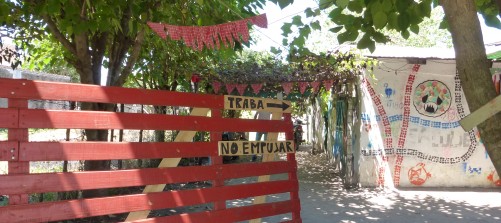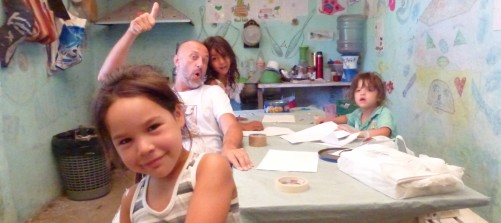A genealogy of affective politics
Visual practices of dissidence in post-dictatorial South America
Políticas de aparición II: a conclusion or so …
To conclude, precise genealogy is still not traceable, over time, however, we can follow this “will of disappearing” and its counter-struggle in a sort of “desire for incarnation and appearance” through many generations. This desire for incarnation takes almost always ephemeral forms and we can say that, at least in this part of the world, this specific form of resistance goes hand in hand with art, probably because they meet at some point of their path, just in the moment in which bio-politics and state of exception became the rule. A common thread runs from Tucumán Arde to the Siluetazo and to the dissident political groups, which themselves do have direct affinity with the relatives’ struggle for memory and social justice. Those apparently heterogeneous movements and groups built the ground of affective politics by creating new political and aesthetic tools: they just came to it through different paths.
Let’s take a step back to the point where we questioned the meaning of affective politics today and whether it does still make sense and how… When I first wondered about this matter I was in Buenos Aires.
Right now, I am in an artist residency at Proyecto La Estrella located in a poor area of the so-called “Cono urbano Bonearense” (approximately two hours from the city center). Local artist and professor Marcos Luczcow who was part of the GAC*12 *( 12 ) collective, is now hosting and implementing the Proyecto La Estrella*13 *( 13 ).
Is it possible that this residency, here with Marcos, who came from the GAC experience, is a coincidence? Or maybe this is the red line of affective politics or its incarnation under new forms? I asked Marcos this question.. He simply answered: “Do you think it makes sense to wonder about such a question in such a place and in this project?”
It is quite surprising that by just putting things into context, it makes them less universal, but articulates a meaningful territory, both conceptually and physically.
Two images of La Estrella project, Mariano Acosta, Buenos Aires province, February 2013
Acknowledgements
This paper is based on the work supported by the Austrian Academy of Science (ÖAW).
Giulia Cilla ( 2013): A genealogy of affective politics. Visual practices of dissidence in post-dictatorial South America. In: p/art/icipate – Kultur aktiv gestalten # 02 , https://www.p-art-icipate.net/a-genealogy-of-affective-politics/





 Artikel drucken
Artikel drucken